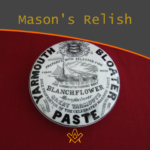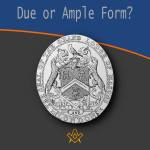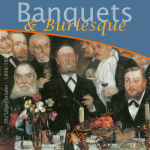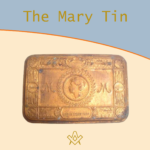A cursory glance at any Masonic Hall’s memorial boards illustrates the recognisable names from the environs of the township.
Many were traders and the lifeblood of small business with most aspiring to betterment of their communities and generally good and charitable deeds.
Several went on to serve in public office as councillors, mayors, and aldermen in a time of upward mobility and betterment within the social classes thus begging the question “Why the Freemasonry link?”

The answer is complex, but one aspect being the social cohesion of a ‘mutual club’ of like-minded men helping each other along the path of good fortune and Civic notability.
The path exemplified in Bedfordshire Province is by Bro Mike Fitz-Gerald of Russell Lodge No 4413 with research into the life and times of the five Neate Brothers (reproduced here, including images, with kind permission):
Surprisingly far from Bedfordshire in fact in Pontypool Monmouthshire Southeast Wales, where Albert Henry Neate in August 1888 was born to Henry and Clara Neate in a little village called Goytre, the story starts.
The village population was small in the mid 1800’s and in the 2011 UK Census the village still had a small population of a mere 2393.
Albert Henry had five other siblings, Horace Richard, Lewis William, Harry Harrison, Edwin John, and Hannah. After the births of Albert, Horace, and Lewis the family uprooted and moved to Cheltenham Gloucestershire in 1896 where Harry, Edwin and their sister Hannah were born.
Albert was too old for active service, but records show that in 1916 Horace joined the Royal Engineers Signal Corp and was posted to Fenny Stratford as a communications Telephonist he was then transferred to Canterbury Kent for more training and was promoted to Sergeant.
Horace’s Military records read that he was transferred to Army Reserves in 1919 and surprisingly stated his home address as being the Pavilion Bedford Park, it is not clear from his military records why, but maybe it is due to Bedford Parks long standing connection with billeted servicemen before, during and probably after the First World War.
He was probably there in an engineering communication capacity based in the Pavilion. Thus the young Horace found himself in this quaint building and from here the family took roots in Bedford.
His brother Lewis also joined up in 1914 to the Royal Engineers Railways, both Lewis and Horace were awarded the Victory medal and British War medal. Records show after the war Lewis was living in Denmark Street in 1925 then Goldington Road in 1934.
Slowly the Neate Brothers moved to Bedford, Albert arrived in Bedford with his wife in 1925, they lived in Gladstone Street.
Youngest Brother Edwin moved to Bedford in 1922 and lived with Horace in the Pavilion. By 1925 the five Brothers were domiciled in Bedford.
All Five were Initiated into Russell lodge during the same year 1924, Horace and Harry a double on the 6 February, Lewis, and Edwin a double on 4 September then their eldest brother Albert again a double with William Sear on 4 December.
Sadly, Albert the eldest brother passed away in 1936 at the young age of 48, never reaching the Chair of King Solomon.
Horace too never made Master’s Chair as his public duties were taking him in another direction. However, Harry, Lewis, and Edwin were installed successively as Masters of Russell Lodge:
W. Bro Harry Neate 1936-37
W. Bro Lewis Neate 1937-38
W. Bro Edwin Neate 1938–39

Neate Brothers van at the Pavilion Bedford Park c.1920s
It is not known exactly when the brothers started to trade in Bedford, but Horace had on his military record that in 1919 he was a confectioner.
Records give no clue as to why they went into this type of business, but trade they did, and Wholesale Confectionary and Tobacco was their vision.
Initially the business was run from the Pavilion in Bedford Park and was probably the idea of Horace and Edwin although Harry became Managing Director.
During the early 1930s the brothers moved the business to Tavistock Street, more centrally in Bedford town.

Horace Richard (1891-1966) C.B.E, D.L was Mayor of Bedford from 1933 to 1935. Interestingly records show he was invited to open in Newnham baths and swimming gala in June 1936. In 1952 was nominated for Sheriff in the Queen’s Bench division of the High Court of Justice by the ancient custom of pricking and was appointed in 1955. The role of High Sheriff is a ceremonial officer providing administrative services to supreme and provincial courts. Horace was on the Bedford Town Council from 1928 and on Beds County Council from 1931, then Alderman 1934-46.
Albert Henry (1888–1936) was a very keen cricketer and regularly was an umpire around the county particularly at the Igranic Works Cricket ground in Cemetery Road Kempston.
Lewis William (1893–1961) became a Special Constable in 1939.
Harry Harrison (1896–1951) was very much involved in the family business and was at one time a Councillor in Bedford and Alderman.
Edwin John (1900–1955) Many crowded the Church at his Funeral Service.

Requiescat in pace brings the township story to its natural end with the role of the eternity tradesmen, the undertakers.
Usually born from builders, stone masons, carpentry trades and horse-drawn carriage masters, they quietly ‘undertook’ the family arrangements and needs in times of sadness and sorrow.
In Victorian and Edwardian times, early death was all too common with poor sanitation and the ever-present curse of fatal diseases. Infant mortality was rife with babies placed unmarked in the foot of adult’s coffins for interment.
The undertaker was busy caring for the community in their final hours. Many towns in quietly dignified corners can be found the Funeral Director’s Parlour.
Many still retaining the old recognisable name, although often now taken over by the big corporates, but nonetheless ready to respond, many with staff and family members still being Brethren in Freemasonry.
Remembering the contemplation in the third degree: “For the closing hour of existence…she finally instructs you how to die.”
Funeral Directors have an affinity Lodge, Acacia No.3436, meeting at Mark Masons’ Hall, London.

About Acacia Lodge No. 3436
Acacia is the Lodge of the Funeral Service and Allied Trades, although we now welcome members from many different professions.
The Lodge acts as a social centre for the funeral profession and has enabled many new friendships in the profession to form.
Article by: Paul Gardner

Paul was Initiated into the Vale of Beck Lodge No 6283 (UGLE) in the Province of West Kent, England serving virtually continuously in Office and occupying the WM Chair on three occasions.
Paul joined Stability Lodge No 217 in 1997 (UGLE) and now resides with Kent Lodge No 15, (UGLE) the oldest Atholl Lodge with continuous working since 1752, where he was Secretary and now Assistant Secretary and archivist, having been WM in 2002.
In Holy Royal Arch he is active in No 15 Chapter and Treasurer of No 1601, which was the first UGLE Universities Scheme Chapter in 2015.
He was Secretary of the Association of Atholl Lodges which maintains the heritage of the remaining 124 lodges holding ‘Antients’ Warrants and has written a book on Laurence Dermott. - https://antients.org
Recent Articles: by Paul Gardner
 Exchanged the Sceptre for the Trowel Explore the intriguing history of Royals and Freemasonry following the new Monarch's Coronation. From Prince Albert's initiation to the influence of George II and beyond, discover why royalty has long exchanged the sceptre for the trowel, shaping society and maintaining power through this ancient craft. |
 Unearth the mystic origins of Freemasonry in 'That He May Be Crafted.' Paul Gardner explores the symbolic use of working tools from the earliest days of this secret society, revealing a time when only two degrees existed. Delve into this fascinating study of historical rituals and their modern relevance. |
 Paul Gardner looks to a time when politics and Masonry were not precluded, but shush! This was London Masons and the Spitalfields Act of 1773-1865. |
 That rank is but the guinea’s stamp, the man himself’s the gold. But what does this mean, even given the lyric and tone of Burns’ time? It is oft times used in a derogatory sense, (somewhat in good humour) between Masons (or not) on the achieving of honours. But its antecedents are much more complex than that. |
 John and Timothy Coleman Blanchflower were initiated in Walpole Lodge, No. 1500, Norwich England on 2 December 1875; noted as a purveyor of ‘sauce’ to masons! |
 Jacob’s Ladder occupies a conspicuous place among the symbols of Freemasonry being on the First Degree Tracing Board, the most conspicuous and first seen by the candidate on his initiation – a vision of beauty and intrigue for the newly admitted. |
 During a detective hunt for the owner of a Masonic jewel, Paul Gardner discovered the extraordinary life of a true eccentric: Dr William Price, a Son of Wales, and a pioneer of cremation in Great Britain. Article by Paul Gardner |
 Paul Gardner tells the story of his transition from one rule book to another – from the Book of Constitutions to the Rule Book for Snooker! |
 Due or Ample Form? What is ‘Ample’ form, when in lodges the term ‘Due’ form is used? |
 The Butcher, the Baker, the Candlestick Maker Paul Gardner explores the Masonic link between provincial towns’ craftsmen, shop keepers and traders in times past. Many remain in the modern era and are still to be found on the high street. |
 Masonic dining and banquets, at least for the annual Investitures, were lavish, and Kent Lodge No. 15, the oldest Atholl lodge with continuous working from 1752, was no exception. |
 The ‘cable-tow’ or ‘noose’ is used in Craft Masonry as part of the ritual, as are ropes and ties in other degrees - but what does it symbolise? |
 Paul Gardner reflects on those days of yore and the “gentleman footballer” in Masonry |
 What is the Masonic connection with the 1914 Christmas Mary Tin |
 That Takes the Biscuit - The Patriot Garibaldi Giuseppe Garibaldi Italian general and politician Freemason and the Grand Master of the Grand Orient of Italy. |
 W.Bro. Paul Gardner looks at a mid 19th century artefact and ponders ‘Chairing’ |
masonic knowledge
to be a better citizen of the world
share the square with two brothers

click image to open email app on mobile device








